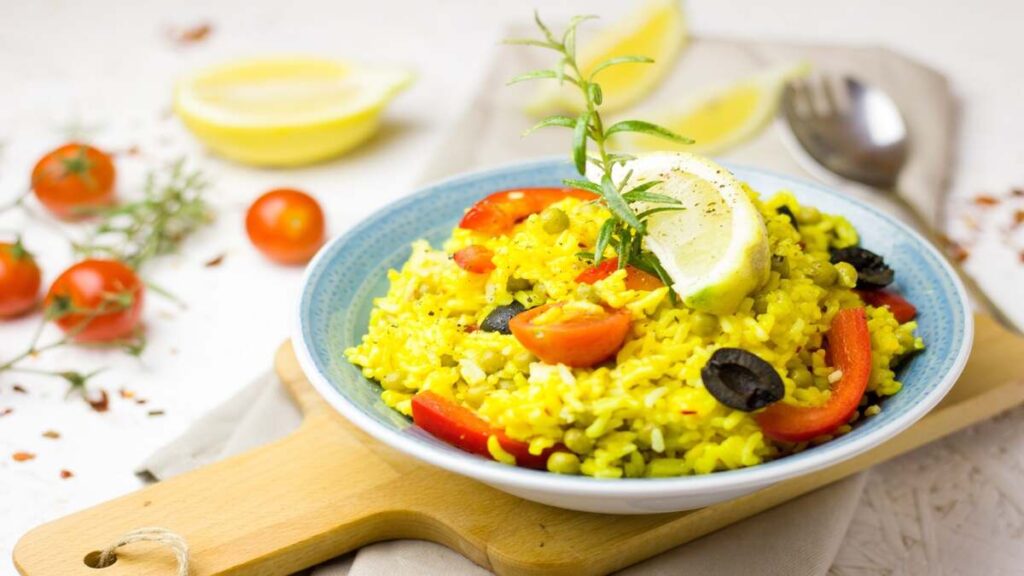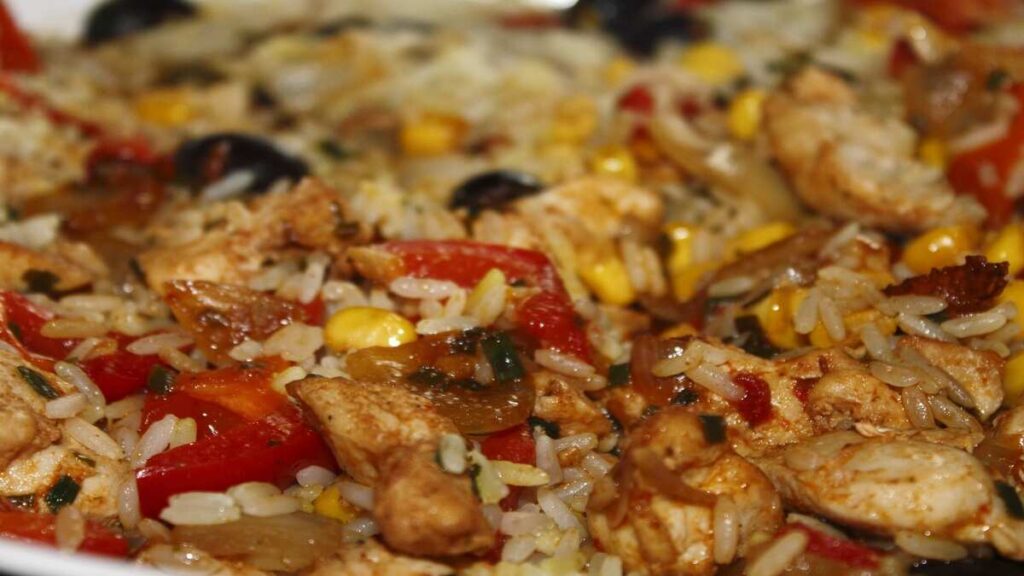Introduction
Imagine a wide, shallow pan brimming with golden rice, infused with saffron, and studded with vibrant vegetables—each bite a harmony of smoky, savory, and fresh flavors. Paella, Spain’s iconic rice dish, has long been associated with seafood and chorizo. But what if you could capture its soul without a single piece of meat? Enter The Ultimate Guide to Vegetarian Paella Recipe, a colorful, nutrient-rich twist that’s as satisfying as the original. In this guide, we’ll walk you through its history, secrets to nailing the perfect socarrat (that coveted crispy bottom), and how to turn simple ingredients into a showstopping meal. Let’s get cooking!
What is The Ultimate Guide to Vegetarian Paella Recipe?
The Ultimate Guide to Vegetarian Paella Recipe is a plant-based adaptation of Spain’s beloved Valencian paella. Instead of meat or seafood, it relies on seasonal vegetables, legumes, and aromatic spices like saffron and smoked paprika. The star? Bomba rice—a short-grain variety that absorbs three times its volume in liquid, creating a creamy yet distinct texture. The dish is cooked in a traditional paellera (wide, shallow pan) to ensure even heat distribution and that signature crispy layer at the bottom.

A Brief History: From Valencia to Your Kitchen
The Ultimate Guide to Vegetarian Paella Recipe originated in Valencia, Spain, in the 18th century. Farmers cooked it over open fires using rice, rabbit, snails, and local beans like garrofó. The word “paella” comes from the Old French paella (pan), but the dish is undeniably Spanish. As paella spread globally, vegetarian versions emerged, driven by dietary shifts and creativity. Chef José Andrés, a paella evangelist, once said, “Paella is a mood, not a recipe.” Today, vegetarian paella celebrates Spain’s culinary spirit while embracing modern, plant-forward eating.
Ingredients You’ll Need
(Serves 6)
- Bomba rice: 2 cups (or substitute Arborio or Calasparra rice).
- Vegetable broth: 4 cups (use high-quality for depth).
- Saffron: 1 pinch (soaked in 2 tbsp warm water). The world’s most expensive spice—worth every thread!
- Olive oil: 3 tbsp.
- Vegetables:
- 1 red bell pepper (sliced)
- 1 onion (diced)
- 1 zucchini (chopped)
- 1 cup cherry tomatoes (halved)
- 1 cup artichoke hearts (canned or fresh)
- Legumes: 1 cup cooked chickpeas or butter beans.
- Spices: 1 tsp smoked paprika, 1 tsp turmeric (for color), salt, and pepper.
- Optional: Lemon wedges, parsley, or vegan chorizo for garnish.
Pro Tip: Use saffron for authenticity—it adds a floral, earthy note. No saffron? A dash of turmeric mimics the color, but not the flavor.
Equipment Checklist
- Paella pan or wide skillet: A 12–14 inch pan ensures proper rice-to-liquid ratio.
- Wooden spoon: For gentle stirring.
- Stovetop or outdoor burner: Paella thrives over consistent, medium heat.

Step-by-Step Preparation The Ultimate Guide to Vegetarian Paella Recipe
1. Prep the Sofrito:
Heat olive oil in the pan. Sauté onions and bell peppers until soft (5 mins). Add garlic and tomatoes, cooking until jammy.
2. Toast the Rice:
Stir in rice, coating it in the oil and sofrito. Add smoked paprika and turmeric.
3. Simmer to Perfection:
Pour in broth and saffron water. Arrange artichokes, zucchini, and beans on top. Do not stir—this disrupts the socarrat. Cook over medium heat for 15–20 mins.
4. Achieve Socarrat:
Increase heat for the last 2–3 mins until you hear a crackle (the rice crisping). Remove from heat, cover with foil, and rest 5 mins.
Common Mistakes:
- Stirring too much → Mushy rice.
- Wrong rice → Sticky texture (Bomba is key!).
Why The Ultimate Guide to Vegetarian Paella Recipe is a Nutritional Powerhouse
- Fiber: 8g per serving (supports gut health).
- Plant protein: Chickpeas add 6g per serving.
- Vitamins: Bell peppers (vitamin C) and spinach (vitamin K).
A 2021 study in Nutrition Journal found that plant-based diets rich in legumes and veggies reduce inflammation. Dietitian Maria Sanchez notes, “Paella’s spice blend, like paprika, is packed with antioxidants.”
Pro Tips and Variations
- Add Umami: Stir in 1 tbsp tomato paste or a splash of white wine.
- Protein Boost: Toss in tofu or tempeh.
- Seasonal Twist: Swap veggies for asparagus (spring) or butternut squash (fall).
How to Serve Vegetarian Paella
- Family-style: Place the pan center-table for a communal feast.
- With sides: Garlic aioli, crusty bread, or a simple green salad.
- Garnish: Lemon wedges (brightness) and fresh parsley (freshness).
Nutrition Facts (Per Serving)
| Calories | Prep Time | Cook Time | Total Time | Servings |
| 380 kcal | 15 min | 30 min | 45 min | 6 |
FAQs
Q: Can I use basmati or jasmine rice?
A: Avoid long-grain rice—it won’t absorb broth properly. Stick with Bomba or Arborio.
Q: How do I store leftovers?
A: Refrigerate in an airtight container for up to 3 days. Reheat with a splash of broth to revive moisture.
Q: Is paella gluten-free?
A: Yes! Use gluten-free broth and ensure spices are uncontaminated.
Conclusion
The Ultimate Guide to Vegetarian Paella Recipe isn’t just a meal—it’s an experience. It’s about slowing down, savoring layers of flavor, and gathering loved ones around a pan that tells a story. Whether you’re a seasoned cook or a kitchen novice, this dish invites you to play, adapt, and celebrate the beauty of plant-based eating. Ready to channel your inner Spaniard? ¡Vamos!
